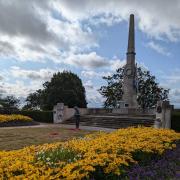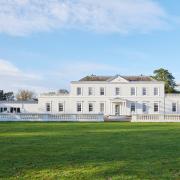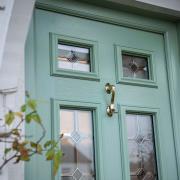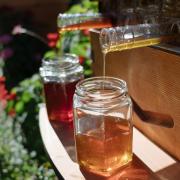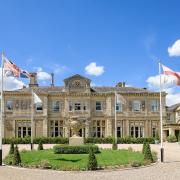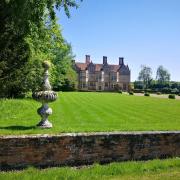The fascinating history of Hadleigh’s first national school is the focus of a new book, which is out now. ‘Tales Out of School’ details the history of the school which opened in 1855.
The book is published by Hadleigh and Thundersley Community Archives and is written by former teacher Chris Worpole who based much of her research on the school’s old logbook.
Chris said: 'I found the history of this village school fascinating. I particularly enjoyed finding out about the children. At times they made me laugh and cry but, ultimately, they demonstrated that children never change.'
While Tales Out of School is essentially about the Hadleigh school, the contents reflect the economic and social conditions that prevailed in rural England in the latter part of the nineteenth century.

At the time Hadleigh was still a farming community with just under half of the workers employed as agricultural labourers. Whites Directory of 1863 added the following: ‘Hadleigh is a small village and parish 1½ miles N.E of Benfleet Station and 6½ W.S.W of Rochford, containing 442 souls and 2679 acres of land. The surface of the parish rises in bold swells from the marshes which is overlooked by the venerable ruins of Hadleigh Castle, which also commands a fine prospect over the estuary into Kent.
‘Lady Olivia Bernard Sparrow is Lady of the manor, although part of the soil belongs to other notable families. The village is pleasantly situated on the London and Southend Road and has an annual fair of pleasure and pedlary on the 24th June.’
Chris explains: The land for the new school was donated by Lady Sparrow. Described as common land, the school building, designed by one of the world’s great gothic architects,
George Edmund Street, stood on Hadleigh village’s main street, now the London Road.
'Prior to the school’s opening, children’s education for the most part came from Sunday Schools run by parish churches. However, from the late 1850’s the Government took a more active role in the provision of education for all, which allowed for the first time the new national schools to receive direct grant funding.
'To facilitate funding a revised code was issued that required the master or mistress of a national school to keep a logbook to record daily events. In turn the logbook then had to be made available for outside inspection. The grants came by way of a form of ‘payment by results’ an early Victorian state intervention that dispersed the monies dependent on the results of the annual examination of student literacy and numeracy – with particular emphasis on the three Rs, Reading, wRiting and aRithmetic.'
Hadleigh received its logbook in 1863. The new logbook included entries about the attendance, weather, school closures, sickness, bad behaviour,timekeeping and visits by inspectors.
Chris explained: "Whilst the logbooks were supposedly a ‘factual’ record, the schoolmasters or mistresses in many cases treated the book as a diary with their personal opinions recorded.
'One of the first entries was on January 1, 1863 where Miss Cecilia Miller wrote, 'Attendance is not very good'. On April 14 Miss Miller wrote: 'Mary Smith pushed a pencil up her nose which with some little difficulty was removed'.
'For another entry in May that year, Miss Miller wrote: 'Children very tiresome, felt the want of an assistant in the school.'
'The only staff at the national school who were classed as teachers were the masters or mistresses.They would have attended a training college. Sometimes a school would have only one adult teacher who would be expected to control over 100 children."
Between 1863 and 1909 the school was under the direction of one mistress and three masters – Miss Cecilia Millar, mentioned above, Mr William Kingswood, Mr Henry Yeaxlee and Mr Alfred Hawks. The logbook proved a valuable source of information on both local education and social conditions at the time.
Chris added: 'In the early days attendance at the school varied between 30 and 70 children. The school day usually began at 9am and went through to 5pm although a long lunch break was allowed as the children had to go home for their lunch.

'Timekeeping was an issue as few working people could afford a watch or clock. Furthermore, school attendance was not yet compulsory. Yet, this did not stop Alfred Hawks, who was appointed master aged 21, writing in the logbook on 16th July 1875:
'Christopher Thorington has again been playing truant. I intend locking him up on Saturday (if I can get him here).' Quite where Christopher Thorington would be locked up is not made clear.
'It is difficult to imagine today, but Hadleigh school attendance was also drastically affected by late or bad harvests which could account for nearly two thirds of the pupils being absent.
'On September 9, 1867, the master Henry Yeaxlee, appointed in January 1865, wrote: 'Began school with only 18 this morning, the harvest still unfinished'.
'Fours year later in July 1871 he wrote: 'A great many children absent pea picking'.
Henry Yeaxlee was master for nearly ten years. Chris explains: 'He suffered continually from ill health which on several occasions resulted in the school closing early or not opening at all.
'His successor Alfred Hawks was in post for over 40 years. In general Alfred Hawks encountered the same difficulties as his predecessors but education was generally improving.
'In 1880, a new education act made school attendance compulsory for pupils aged between five and ten. School attendance officers were appointed but even at the turn of the new century Alfred Hawks was still writing of large-scale absences due to fruit picking.'
The Hadleigh National School closed in 1924 and the remaining children moved to the nearby council school in Church Road.The building was later used as a hall for the parish church and now is a nursery.
‘Tales out of School’ is available from the Hadleigh and Thundersley Community Archives and can be ordered online through https://www. essex100.com/product/tales-out-ofschool/
The school’s original logbook is held by the Essex Records Office in Chelmsford.

pic caps-
the Hadleigh National School pictured circa 1910- no credit
School Master for 40 years - Alfred Hawks pictured in 1906- no credit
Class photo - Miss Emma Bell’s class of 1889. She is pictured standing on the far right- no credit
Chris Warpole headshot- no credit
Historical notes - the handwritten log book entries. Credit the Essex Records Office
Book cover- no credit






